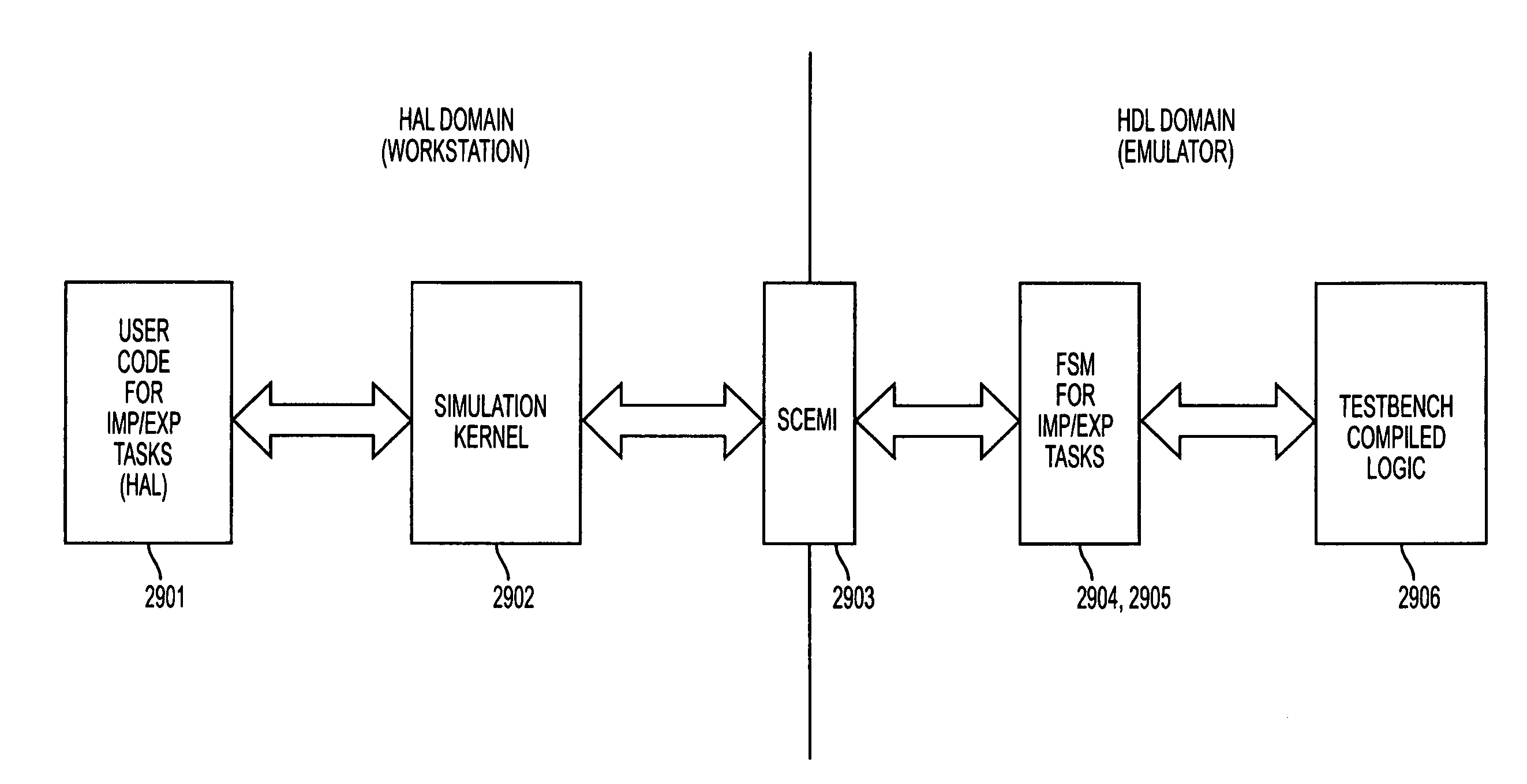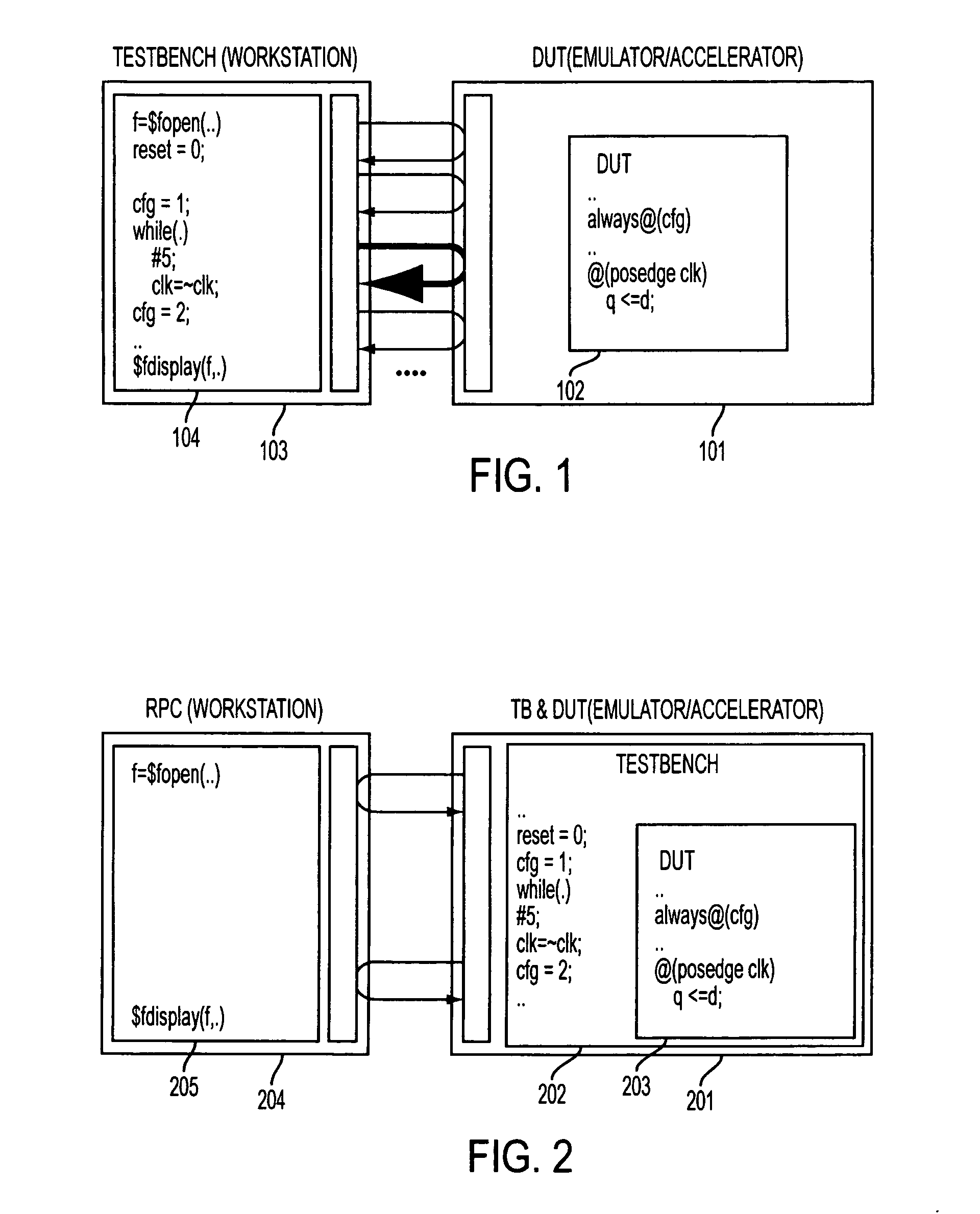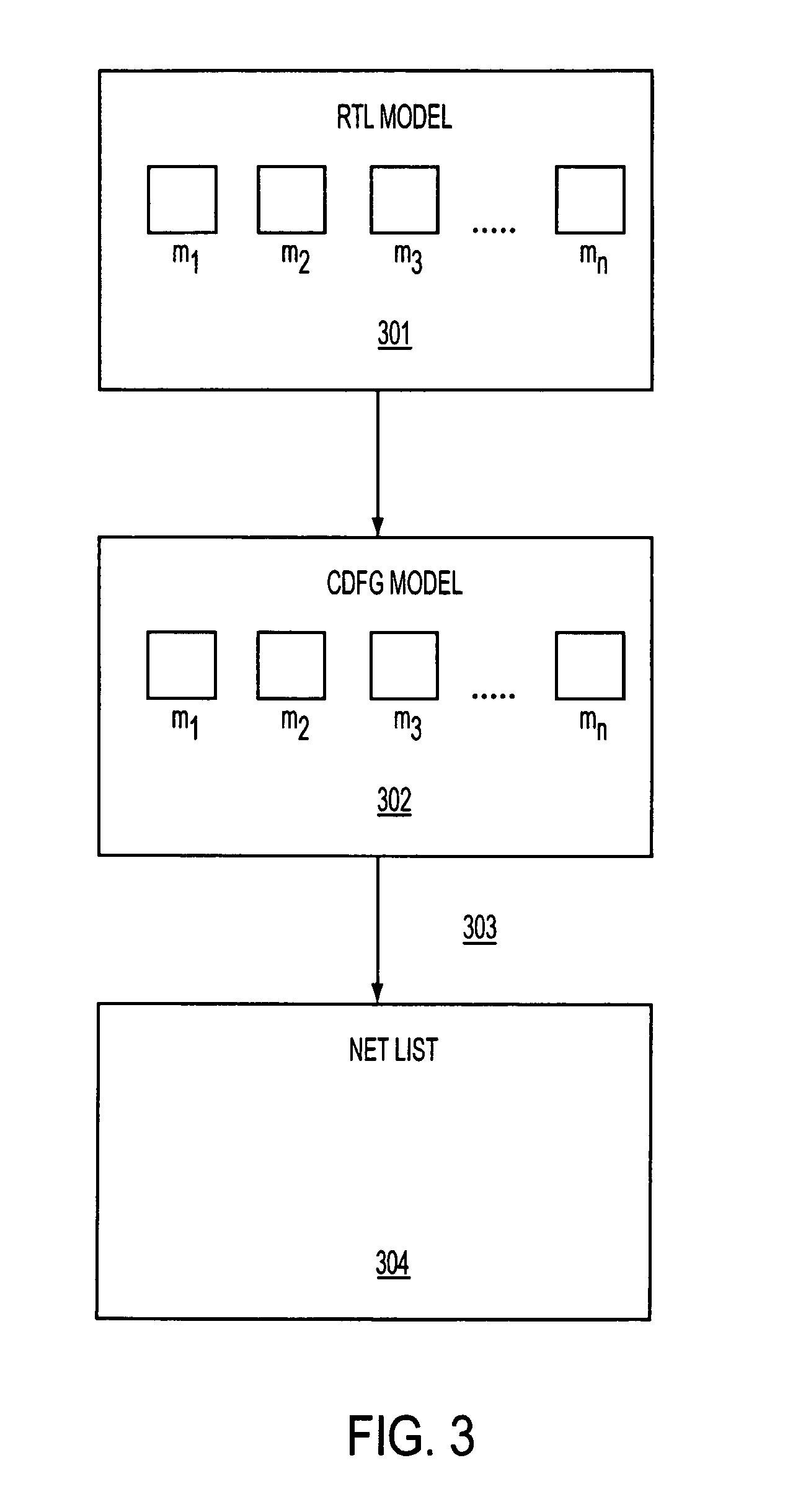Compilation of remote procedure calls between a timed HDL model on a reconfigurable hardware platform and an untimed model on a sequential computing platform
a hardware platform and remote procedure technology, applied in software simulation/interpretation/emulation, instruments, program control, etc., can solve the problems of simulators typically not exceeding a few tens to hundreds of clock cycles per second (cps), synthesis tools presently cannot be used to synthesize behavioral test benches, and simulators typically cannot achieve a speed of not more than a few tens to hundreds of clock cycles per second (cps). to achieve the effect of ensuring repea
- Summary
- Abstract
- Description
- Claims
- Application Information
AI Technical Summary
Benefits of technology
Problems solved by technology
Method used
Image
Examples
case 1
[0135] two synchronous processes using different clocks. This case may be resolved using the multi-clock macro discussed above.
case 2
[0136] two synchronous processes using same clock. As discussed earlier, such cases are un-ambiguous only if the assignments don't occur at the same simulation time. Thus, a special circuit may be used that produces correct results when the assignments are mutually exclusive in time. To explain the circuit, every process assumes that it is the only driver for a register and sends out the next cycle value for that register to a flip flop. In case there are two such processes, two next cycle values are being sent to this circuit. The circuit chooses the value that is different from the current value of the register. This works because if the next value is different from the current one it has to be due to an assignment from that process. FIG. 8B illustrates this arrangement.
case 3
[0137] two non-RTL processes. Recall that non-RTL processes are nothing but RTL processes synchronous with the behavioral clock. Thus, the solution applied to CASE 2 works in this case as well.
Zero Delay Cycles
[0138]In Verilog, special meaning has been assigned to the #0 statement (i.e., a zero delay cycles statement). Assignments that are scheduled non-blockingly cannot mature at #0. Thus, a #0 statement is a special zero delay cycle, which is similar to blocking zero delay cycles.
[0139]During a #0, the global minimum time advance may take a zero value. For this reason, a non-blocking maturity global signal also depends on the global minimum being non-zero to assert itself, thus ensuring that non-blocking zero delay cycles are deferred when #0 is being executed.
System Tasks / Functions
[0140]As mentioned earlier, system tasks / functions are implemented as remote procedural calls. The actual execution of these tasks may take place in the workstation 204. The procedural blocks view the s...
PUM
 Login to View More
Login to View More Abstract
Description
Claims
Application Information
 Login to View More
Login to View More - R&D
- Intellectual Property
- Life Sciences
- Materials
- Tech Scout
- Unparalleled Data Quality
- Higher Quality Content
- 60% Fewer Hallucinations
Browse by: Latest US Patents, China's latest patents, Technical Efficacy Thesaurus, Application Domain, Technology Topic, Popular Technical Reports.
© 2025 PatSnap. All rights reserved.Legal|Privacy policy|Modern Slavery Act Transparency Statement|Sitemap|About US| Contact US: help@patsnap.com



